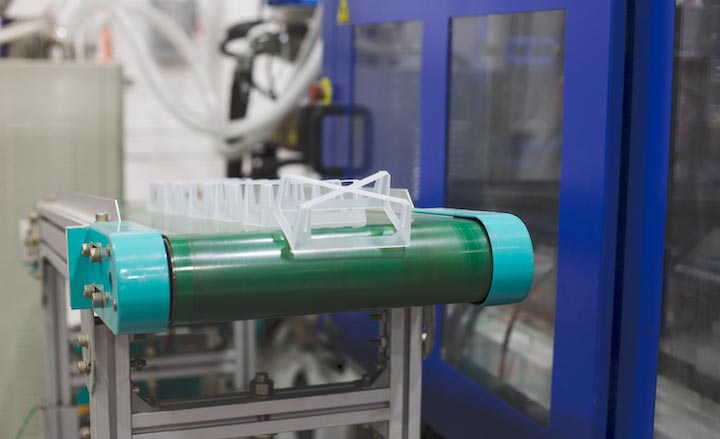- Home
- About Us
- Blog
- Capabilities
Sub-Processes
Plastic Materials
Processes Available
Post Processing
- Contact Us
| Applicable Materials | Colors | Applications | Texture |
|---|---|---|---|
| PA12 and PA 12 Glass Beads | While vapor smoothing itself does not apply a color to the part, it makes the colors of the part more vibrant — so black dyed parts become a deeper, glossier black. Note that gray (raw) MJF parts will turn a near-black if vapor smoothed, as the gray surface melts into the black interior of the part during the process | Enhanced cosmetic appearance, improved mechanical properties | Smooth and glossy |
Vapor smoothing is a finishing process for 3D printed parts that uses a vaporized solvent to smooth the surface of a printed part without adding or removing material. The process is a controlled chemical melt that reduces the variation of peaks and valleys found on the surface of any printed part. It is used to reduce or remove visual layer lines and natural imperfections that occur during printing, leaving a smooth, glossy finish.
Along with improved cosmetic qualities, vapor smoothing seals the part’s surface and improves the mechanical properties of the part by filling in microfractures and other potential points of failure if the part is put under stress.

Stereolithography (SLA), the technology used to produce them, supports the creation of plastic parts with tight tolerances, intricate geometries, and smooth surface finishes. And parts printed using SLA stand out because of their exceptional accuracy, resolution, and level of detail. One key advantage of SLA is its ability to achieve finishes that are both highly […]

Are you ready to scale up from 3D printing to injection molding? Then it’s time to tailor your part design for a process that uses metal tooling and has its own unique design requirements. This article begins with some injection molding basics and then explains how to optimize your part design to reduce tooling costs […]